Topic outline
-
By the end of this course, you will learn:
- What a force is
- What the different kinds of forces are
- How forces work
- The effects forces have on objects
- What a force is
-
You probably have heard the word 'force' quite often. But have you ever stopped to think about what a force really is? What do you understand by the word 'force'?
Have a look at the clip below. Are there forces involved? What kinds of forces are they and can you name any of them? How would you describe what you see happening?
This is what you might have said you see happening.
I see a ball lying still on the ground. It is at rest. When the boy kicks the ball, it lifts off the ground and moves through the air, towards the net. When it hits the net, the ball’s motion changes. The shape of the net also changes. The ball then falls to the ground, rolls along for a while, and then comes to rest again. The net wobbles in the frame for some time, until it, too, stops moving.
-
Activity 1: What is a force?
Time required:
- 5 minutes
What you need:
- A ball
What to do:
- Do this activity with a friend or partner. Stand about 5 m apart.
- Place a ball on the ground next to you. Does the ball move on its own? Are there any forces being applied to the ball? Think about why the ball does not float away?
- How would you move the ball to your partner without carrying it to them?
- In whatever way you like, move the ball to your partner. How did you do it? Was a force applied to the ball? What applied the force? What other forces acted on the ball?
What did you find:
When you placed the ball on the ground, it did not move by itself. But this does not mean that there were no forces acting on the ball. There were just no forces acting to move the ball away from you.
While the ball did not roll away by itself, it also did not float away. This is because the force of gravity kept it on the ground. However, the ball also did not sink into the ground because the ground pushed up on the ball as well. The force of gravity pulled the ball down and the ground pushed the ball up. These forces were the same size but acted in different directions. We say they were balanced.
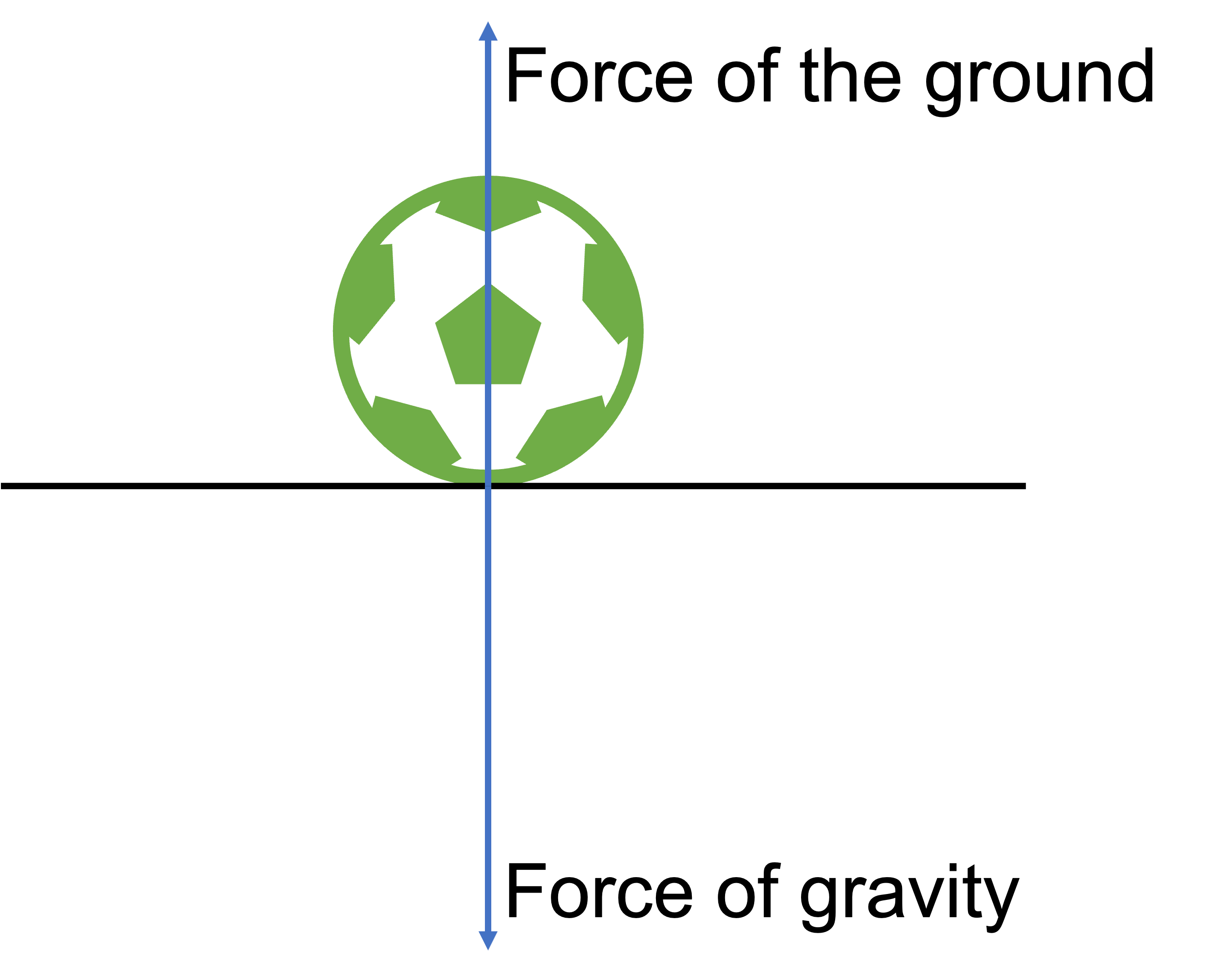
To move the ball to your partner, you have to kick it, roll it or throw it to them. When you do this, you apply a force to the ball. If you kicked the ball, your foot applied this force. If you rolled or threw the ball, you hand applied this force.
Whether you kicked, rolled or threw the ball, you might have noticed that as you applied the force to the ball, you 'felt' it. This was the ball applying an equal force to your foot or hand that acted in the opposite direction.

As the ball moved to your partner, you might have noticed that it slowed down as it moved along. This was because the force of friction (either the ground ro the air) was acting on the ball in the opposite direction to its motion.
- 5 minutes
-
A simple definition of force
The easiest way to think about force is that it is a push or a pull on an object because of an interaction with another object. When you kick a ball, your foot (an object) interacts with another object to push it.
- All forces can be categorised as a push or a pull.
- All forces are applied to an object die to its interaction with another object.
We can define a force as a push or pull upon an object resulting from that object's interaction with another object.
Which of the images below show a pushing force? Which one shows a pulling force? In each case, what objects are interacting?
- All forces can be categorised as a push or a pull.
-
Activity 2: Force actions
Time required:
- 15 minutes
What you need:
- A pen/pencil
- A piece of paper
What to do:
- Do this activity with a friend or partner. Together, list as many examples of actions from your everyday life as as you can think that involve forces of e.g., kicking a ball, riding a bicycle, and walking. You should be able to list at least 15.
- Now categorise each of these as a push or a pull. You might be able to categorise some as both. For example, when moving something like a book, you could push to pull it.
- For each action, identify which objects are interacting.
What did you find:
An example you might have come up with was picking up a school bag. In this case, the force would be a pull and the objects interacting would be your arm and hand and your school bag.
- 15 minutes
-
Watch: What is force?
Watch this video for an excellent summary of what forces are. As you watch, think about all the other forces you experience in your everyday life.
-
-
When we think of forces as a push or a pull on an object due to its interaction with another object, the examples that might come easiest to mind are those where the objects make physical contact with each other e.g., a foot kicking a ball, a hand picking up a school bag, or a stone smashing a window.
These are examples of contact forces. For the force to be exerted on the object, there must be physical contact between the objects.
In this next activity, you will have a chance to explore some of the different kinds of contact forces.
-
Activity 1: Investigate contact forces
Time required:
25 minutes
What you will need:
- Two different objects, each with a flat surface and of different masses, e.g. two books of different masses; you should be able to hold the objects in your hand
- a flat table
- a chair
- an elastic band
- a piece of paper
- a piece of rope or string
What to do:
- Hold the lighter of the objects in your hand. What do you feel? What forces do you think are involved?

- Now hold the heavier object and then both objects in your hand. What do you feel each time?
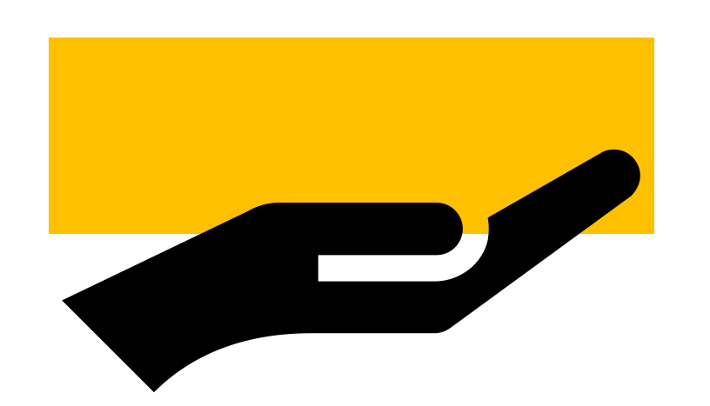
- Place the lighter object on a flat surface. What happens? How would you get the object to slide across the surface?

- Now push against the object very gently. Increase the amount of force until it starts to slide across the surface. How hard do you have to push to make the object slide? When you stop pushing, does it keep on moving, or eventually stop? Why do you think this is? What would you have to do to keep the object moving?

- Repeat step 4 with the other, heavier, object. What is the same? What is different? Why is it different?

- Hold the piece of paper above the ground and let it go. What happens?

- Now crumple the piece of paper into a tight ball, hold it the same height above the ground as before and let it go. What happens now? Did the paper fall faster or slower than before? Why does the paper fall at a different speed when in the shape of a ball? What force do you think is involved?
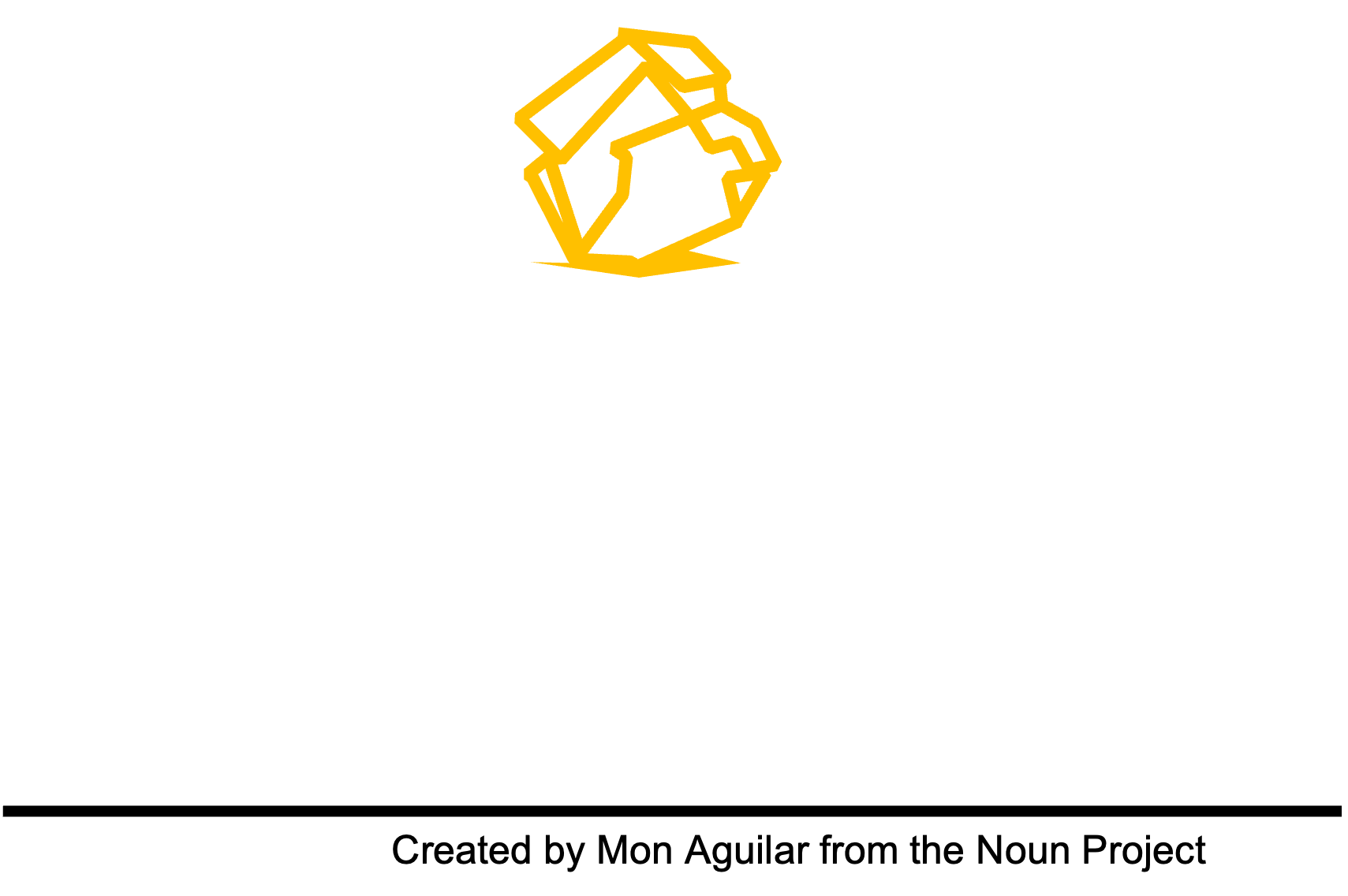
- Loop the elastic band around your index finger. Hook the index finger of your other hand through the free end and pull on the elastic band. Keep stretching it slowly then stop pulling and hold it in place. Now slowly release it. What interactions do you observe? What forces are involved?
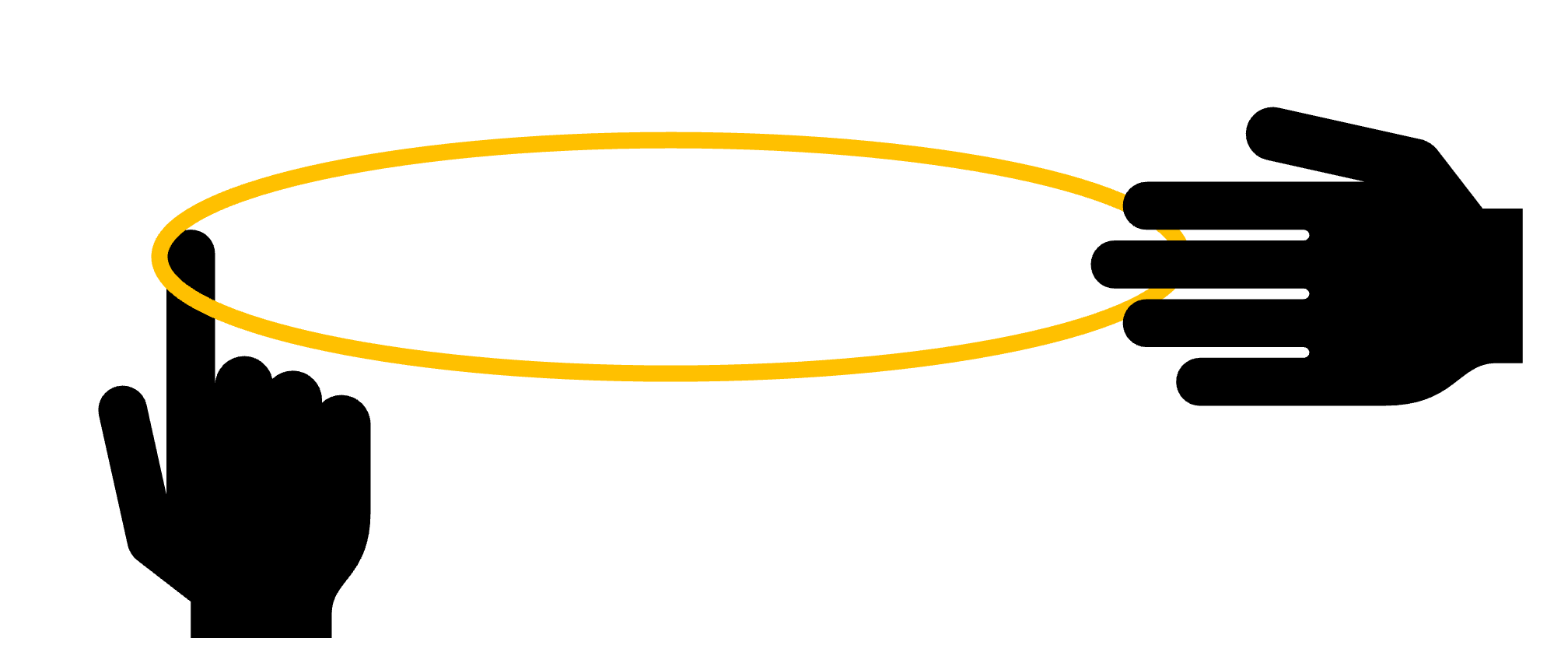
- Now loop the free end around your paper ball and pull to stretch the elastic with the paper ball in it. What do you think will happen if you release the elastic with the paper ball in it? Test this to see if you are right? What forces are involved?
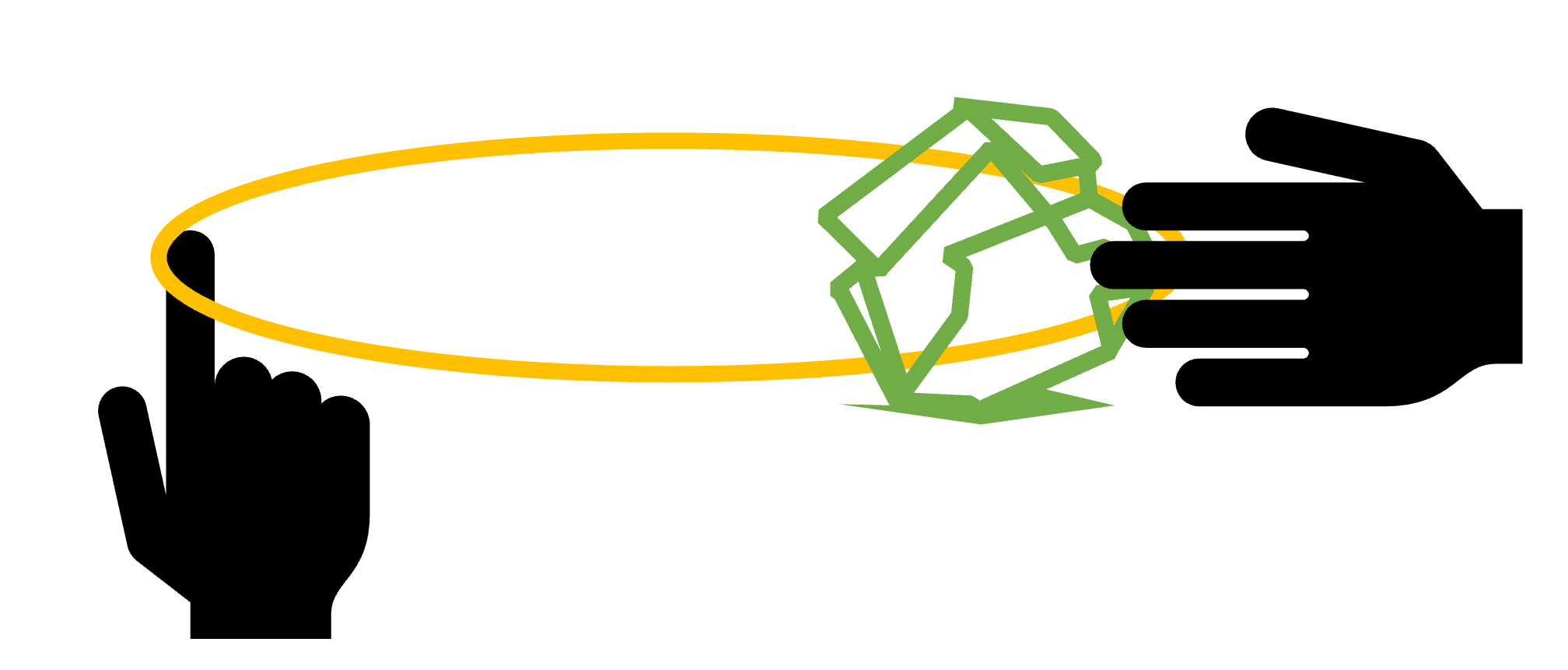
- Tie the string or piece of rope to a table or chair leg. Pull on the rope. What do you see happen? What happens if you keep pulling harder and harder on the rope or string?
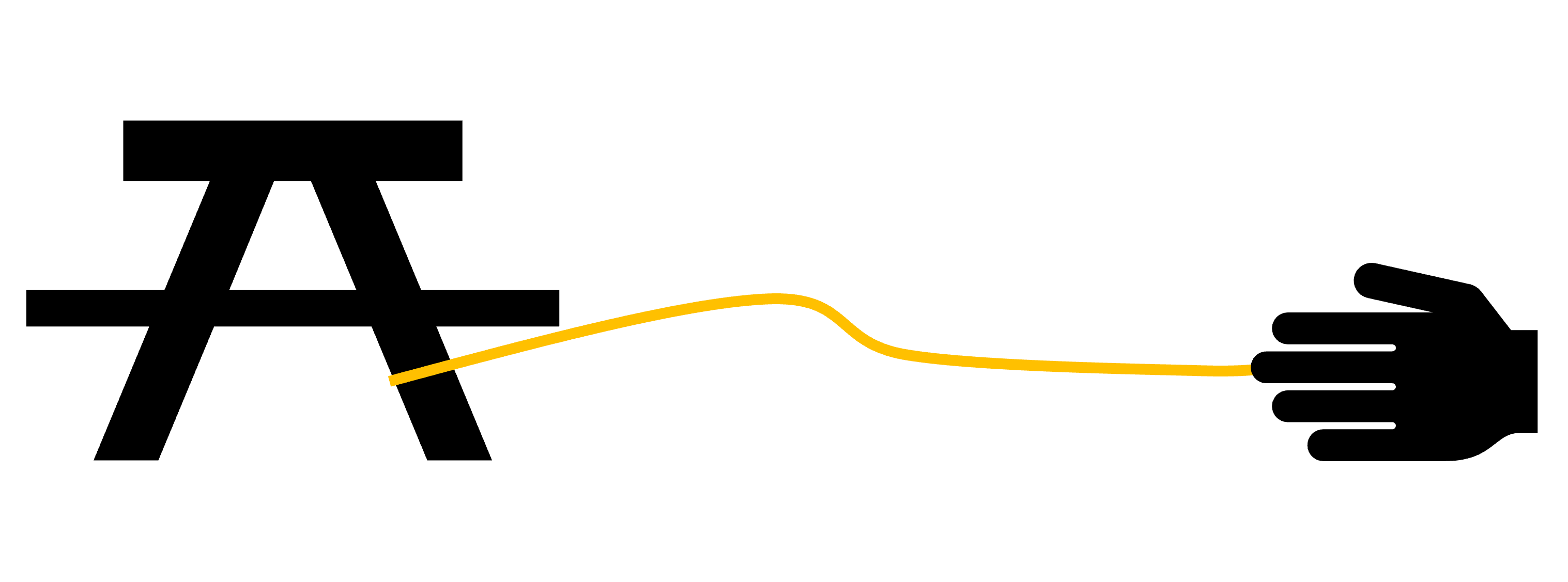
What did you find
Step 1:When you held the lighter object in your hand, you could feel it pressing against your hand. This is because the Earth's gravity was pulling the object down. This is the force you felt - the force of the object pressing against your hand because of gravity pulling it towards the Earth.
But the object was stationary. It did not fall to the ground. Therefore, there was an equal but opposite force pushing it up to balance out (or counteract) the force downwards due to gravity. This force was your hand pushing up on the object. This counteracting force pushing up on the object is called the normal force. The normal force is always present when an object rests on a surface and always acts perpendicular (at 90∘or a right angle) to the surface.
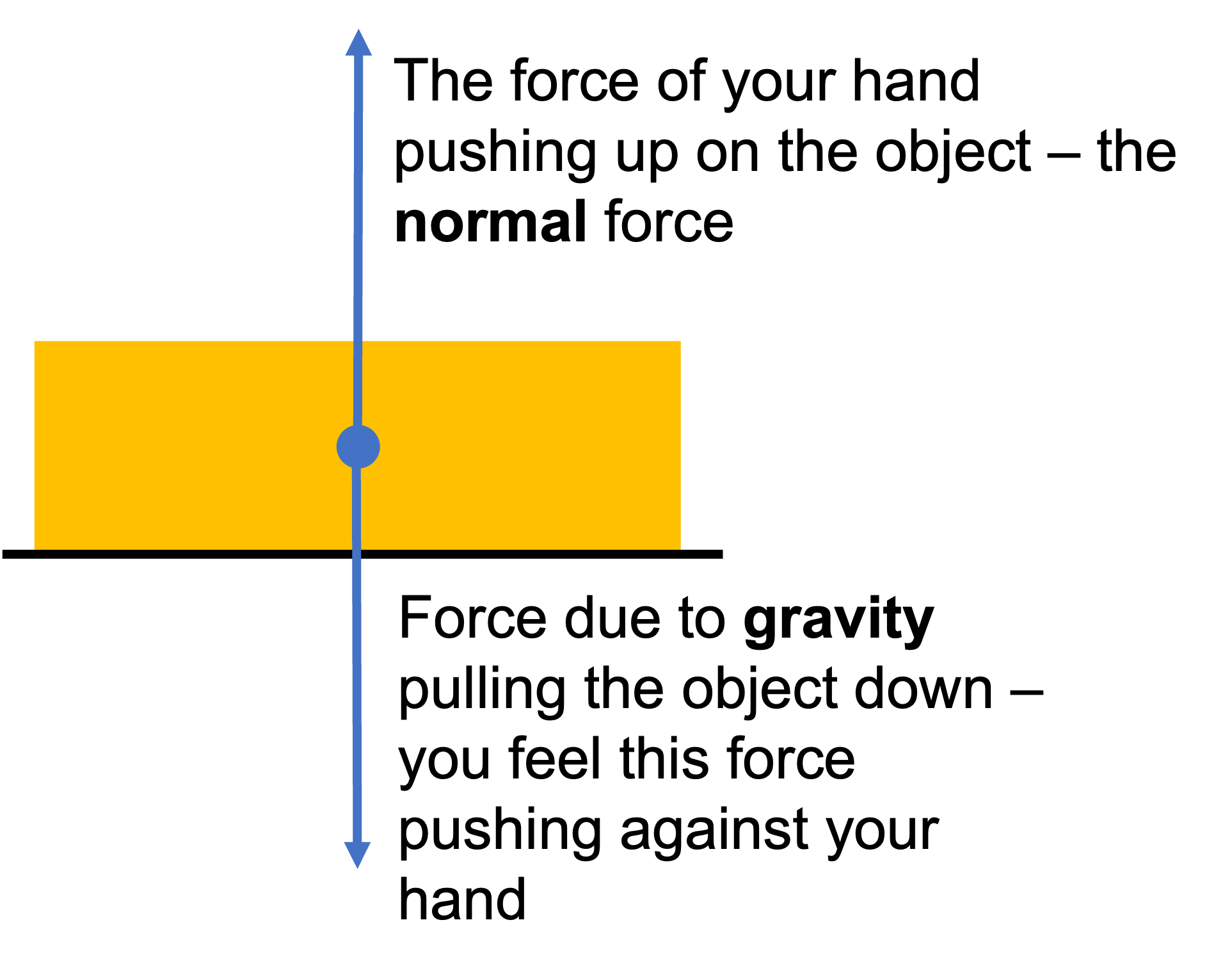
This also shows us that forces always work in interacting pairs. The object pushes down on your hand and your hand pushes up on the object.
In physics, normal means perpendicular to or at right angles to.
Step 2:When you held the heavier object in your hand, it felt heavier. This is because, the heavier something is, the more strongly gravity pulls that object towards the Earth. Therefore, both objects together, would have pushed down on your hand with even more force and felt even heavier.
However, to keep the objects stationary, the counteracting upward normal force was also bigger. Your hand pushed up with more force. It was equal and opposite to the force of the objects pushing down on your hand due to gravity. Notice how we use longer arrows to indicate bigger forces.
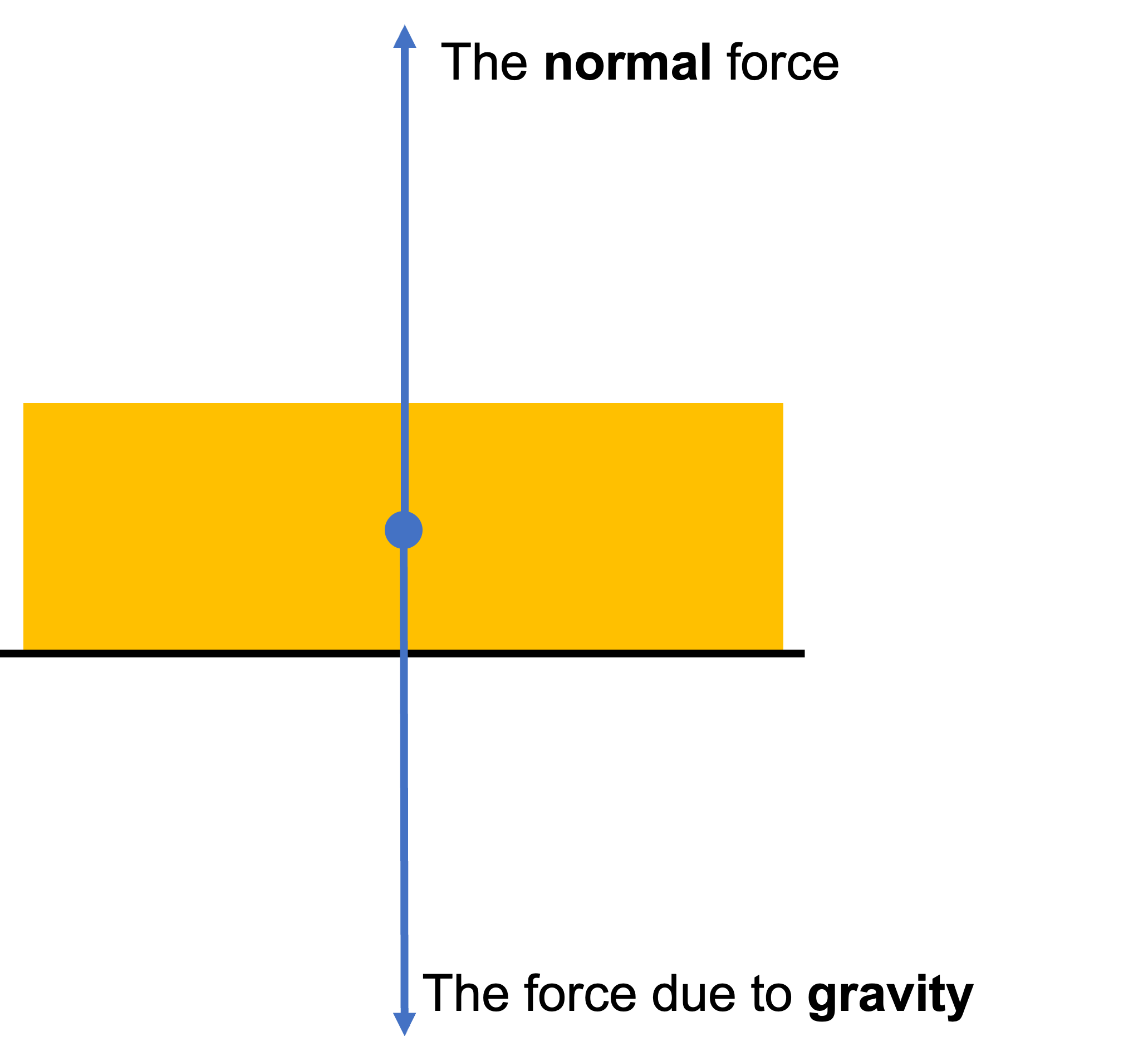
Remember that forces always work in pairs. The object pushed down on your hand and your hand pushed up on the objects. Because the objects were stationary, these forces balanced and there was no overall force acting on the object to move it.
Step 3:When you placed the object on the flat surface, both gravity (pulling the object down) and the normal force (pushing the object up) acted on the object. Again, they balanced each other, and so the object did not move.
Step 4: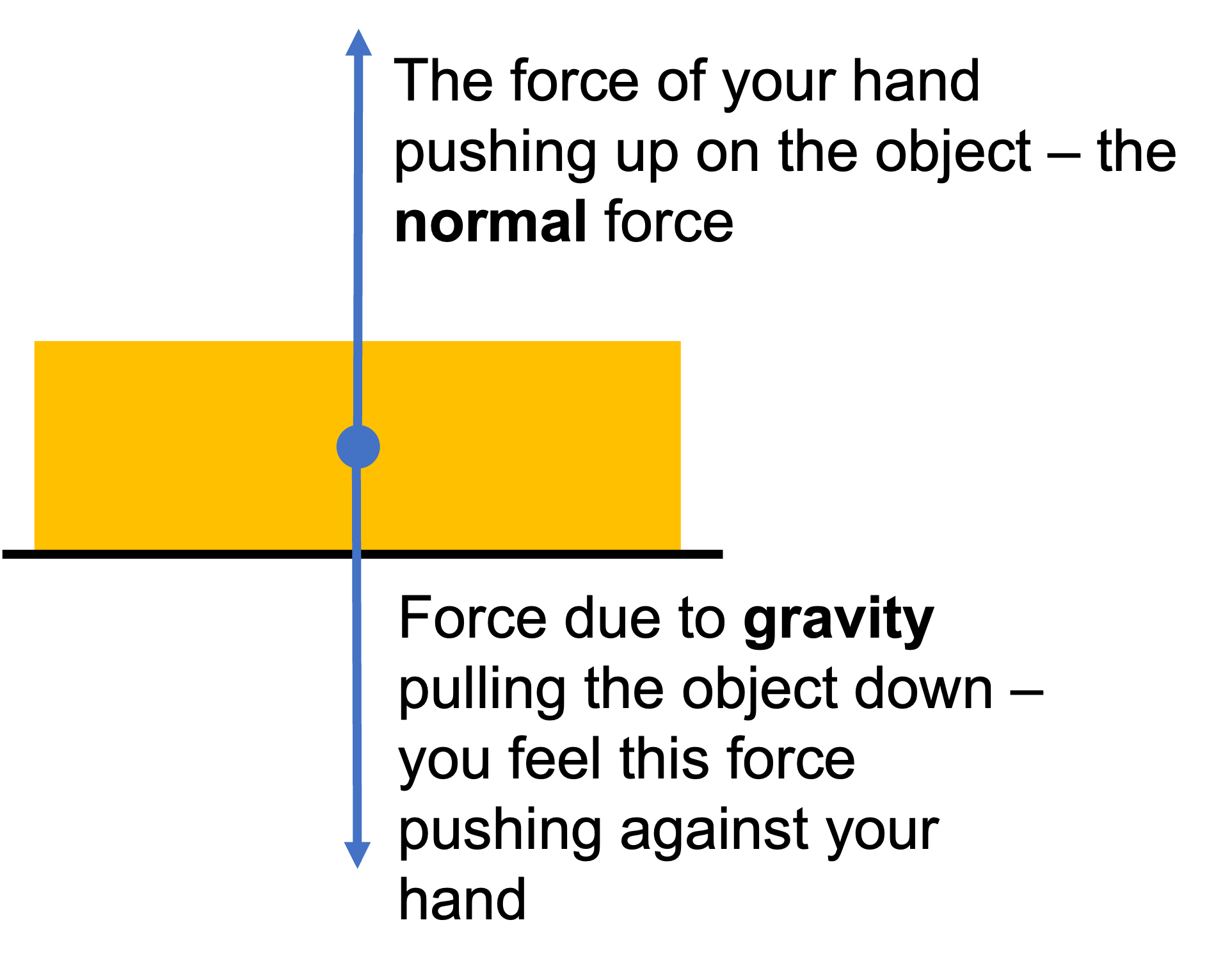
To make the object slide across the surface, you have to push it from the side. You have to apply a force to it. This is called an applied force. When you do this, the object experiences an unbalanced force in the horizontal direction. However, to make the object slide, you have to apply a certain amount of force. You have to apply more force than the force of friction pushing in the opposite direction. As soon as you do, the unbalanced force makes the object slide.
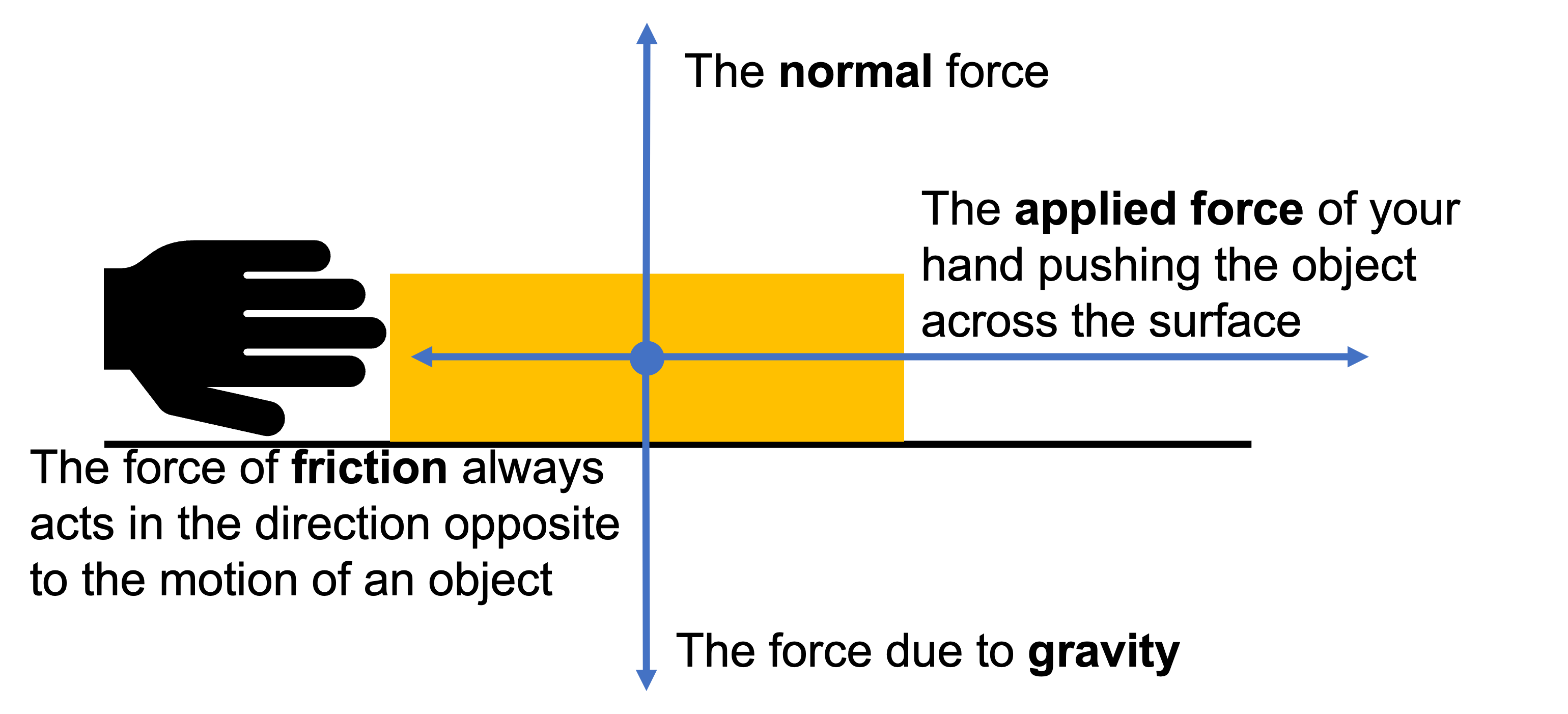
Notice how we use a longer arrow for the applied force to indicate that it is greater than the force of friction. When the force arrows are different lengths, we can see we have an unbalanced force.
Note also that because the unbalanced force was in the sideways (horizontal) direction, the object moved in this direction. The vertical forces were still balanced so the object did not move up or down.
Friction is a force that opposes motion and acts in the opposite direction to the motion. Friction always exists when two surfaces are in contact with each other, but is most notable when one surface moves over another and when one of the surfaces is rough.
When you stopped pushing the object, it slowed down and stopped. This is because, the force of friction was still acting in the opposite direction to the motion but you were no longer applying a force in the other direction. Once again, there was an unbalanced force, but this time in the other direction.
To keep the block moving, you would have to keep applying a force at least as great as the force of friction pushing in the opposite direction.
Step 5:Once again, the object did not move on its own. You had to apply a sideways force to it that was greater than the force of friction acting in the opposite direction. But this time, because the object was heavier, you had to apply a greater force.
We know that the heavier an object is (the more mass it has) the greater the force it will apply to a surface because of gravity and, therefore, the greater the normal force acting up on it will be. Therefore, the heavier an object is, the greater the forces between it and the surface. This means that the force of friction will be greater.
Therefore, when we have similar objects (like two books) on the same surface, the heavier object will experience a greater force of friction and so a greater horizontal force will need to be applied to overcome friction (create an unbalanced applied force) to move it across the surface.
You might have also noticed that, when you stop pushing, the heavier object stopped moving more quickly. Again, this is because the force of friction acting in the opposite direction to the motion is greater for the heavier object.
Step 6: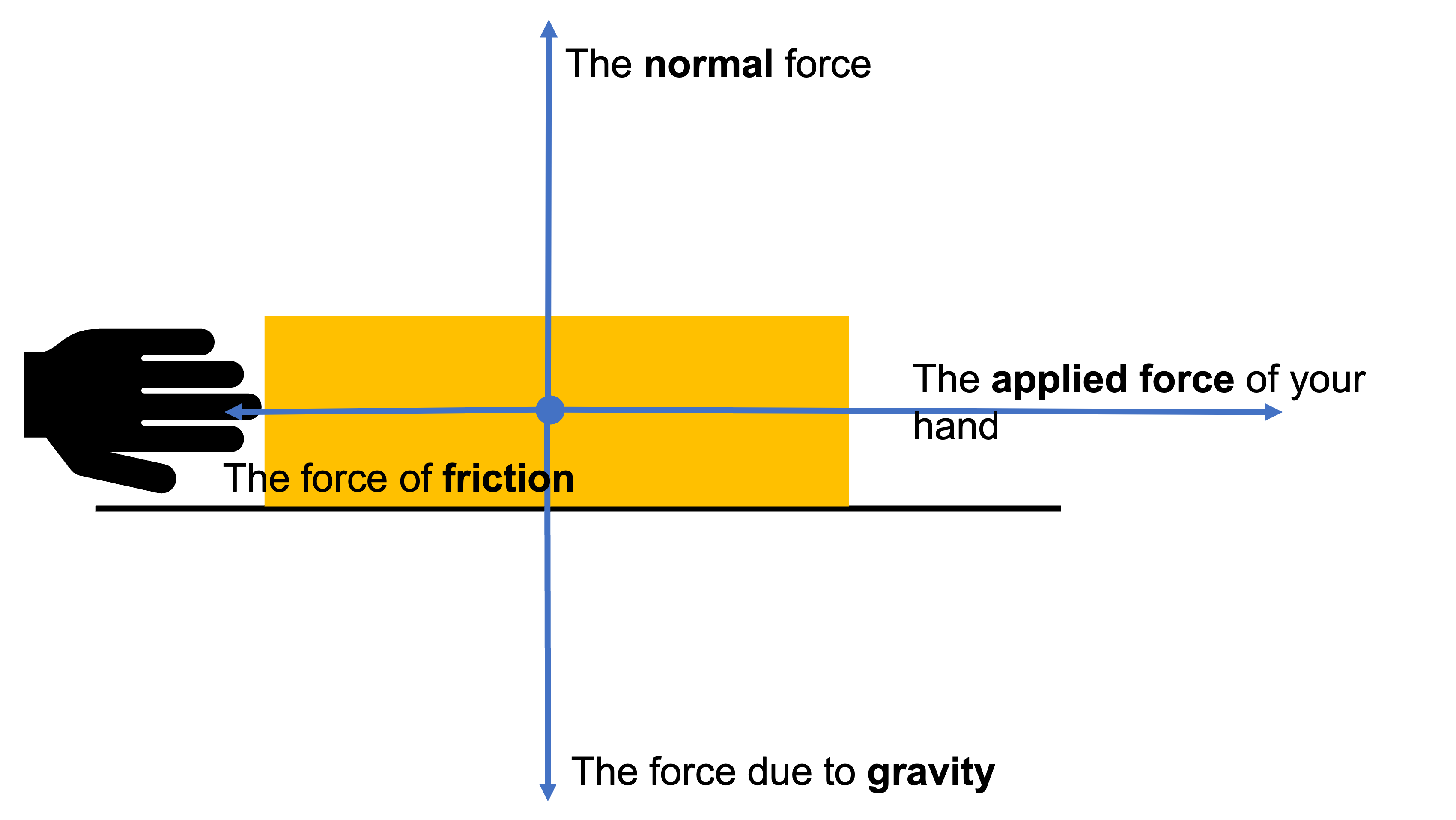
When you let go of the piece of paper, it floated slowly down to the ground. This is what you expect. We know that all objects are pulled towards the Earth by gravity. No surprises here!
Step 7:When we crumple that same piece of paper into a tight ball and drop it, it falls much more quickly? This is because, anything that falls to the ground has to fall through the air. If you have ever ridden a bicycle or stuck your hand out of a moving car, you will know that the air can apply quite a lot of force. This force is called air resistance. The sheet of paper had a big surface that had to move through the air. It experienced lots of air resistance. The crumpled ball of paper was much smaller with a smaller surface that had to get through the air. Therefore it experienced far less air resistance.
In both cases, the mass of the paper was the same, therefore, the force due to gravity was the same. But the greater air resistance acting upwards on the sheet of paper, meant that the overall force pulling it down was less than the overall force pulling the ball of paper down and so it fell more slowly.
Step 8: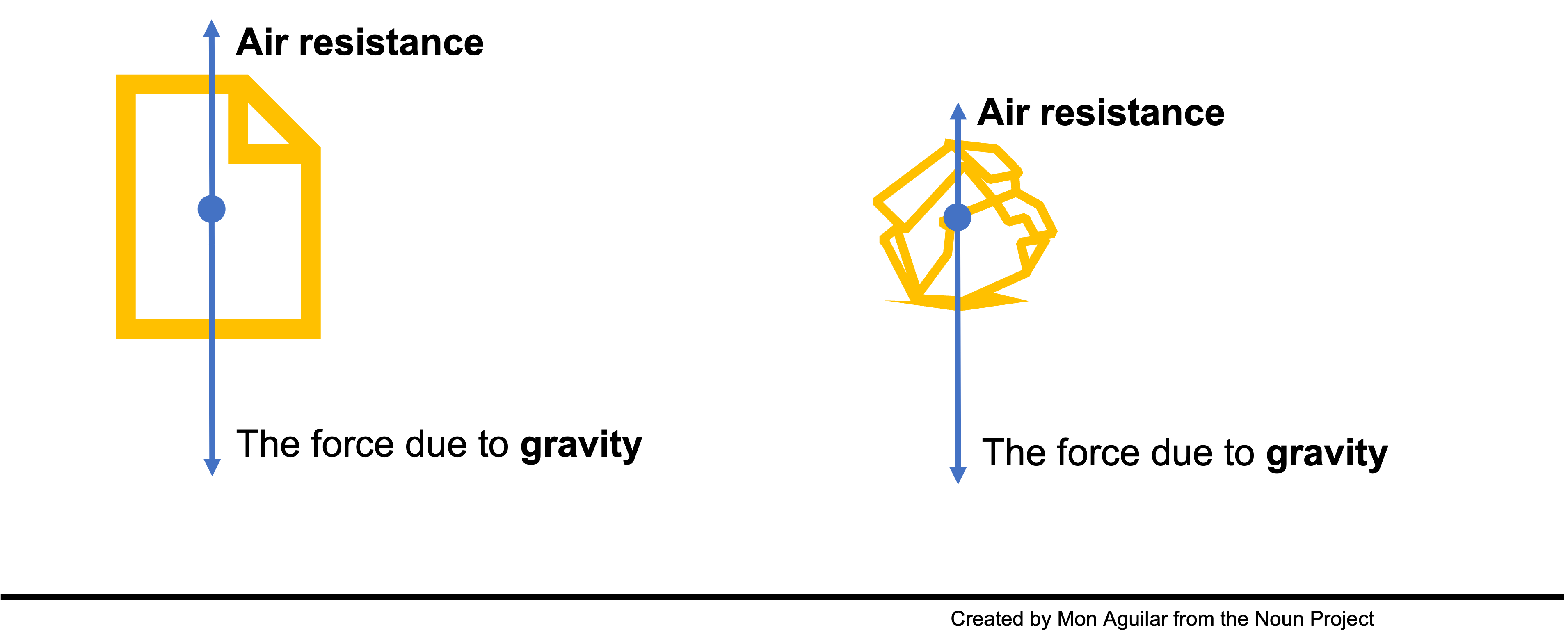
An object that can stretch and return to its original length exerts an elastic or spring force. You observed this when you stretched and released the elastic band. As your finger pulled on the elastic band, it pulled back in the opposite direction. The more you stretched it, the greater the force with which it pulled back and so the more force you needed to apply to stretch it further or just hold it in position.
As you reduced the amount of force you applied, and the spring force of the elastic band became greater than your applied force, the band started to contract again and pull your finger with it.
Step 9:
When you released the elastic band with the ball of paper in it, the spring force of the elastic band acted on the paper ball to shoot it forward. This is how catapults work. There was a large unbalanced force acting on the paper ball. The greater this unbalanced force, the further the paper ball will fly.
Step 10:When you pulled on the rope tied to a fixed point, you would have experienced a tension force. A tension force exists in a rope, cable, chain or string pulled tight. This is not an elastic force because the rope or cable does not stretch further than its original length when it is pulled tight.
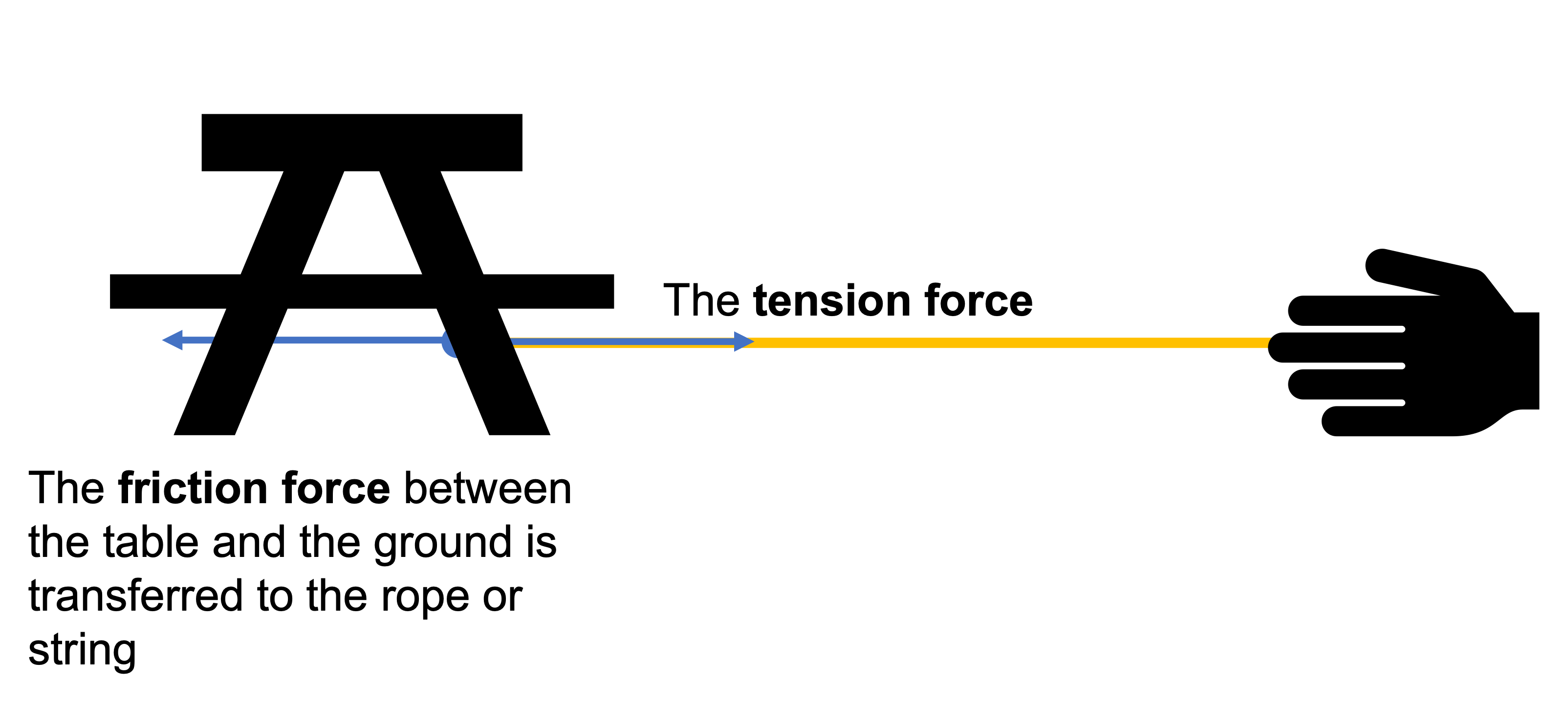
As you keep pulling harder, this tension force gets bigger. As it grows, it will either become greater than the friction force being experienced by the object to which it is attached and that object will start to move, or the rope or string will snap.
-
Watch: What are CONTACT Forces? - Part 1
-
Watch: What are CONTACT Forces? - Part 2
-
-
Understanding a force as the result of an object’s interaction with another object allows us to classify forces according to two broad categories:
- Contact forces result from contact interactions, in other words when two objects touch each other.
- Non-contact forces result from objects interacting with each other at a distance, without direct contact between them. These interactions are due to the fields around objects interacting with each other.
In the next two activities, you will have an opportunity to explore different types of forces in each category. Being able to correctly identify the types of forces acting on an object will help you to draw force diagrams.
To identify the types of force acting on an object, always ask how the object is interacting with its surroundings.
-
Activity 1: Investigate non-contact forces
Time required:
5 minutes
What you need:
- a (non-fragile) object made of wood, plastic or metal
- two magnets
- some metal paper clips or drawing pins
- a plastic ruler
- a dust cloth
- small pieces of paper
What to do:
- Hold the wooden, plastic or metal object above the ground. Then release your grip. What do you observe?
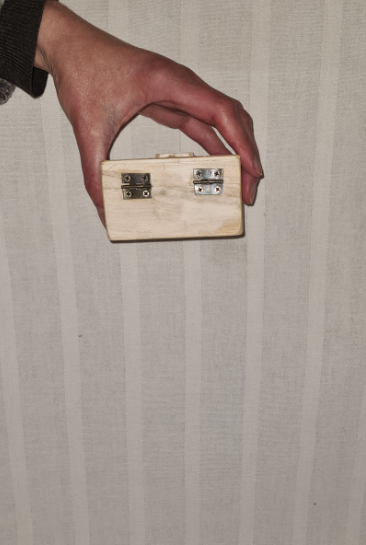
- Put the paper clips or drawing pins on a flat surface. What happens when you hold the magnet over them?
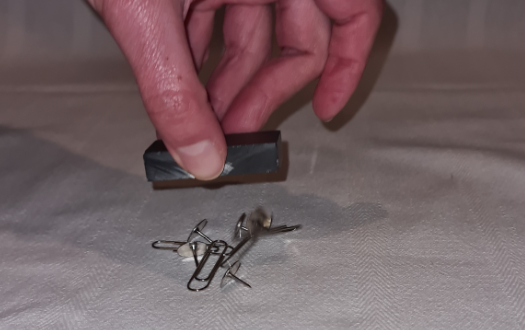
- Take the two magnets and bring them towards each other. What do you feel and observe?
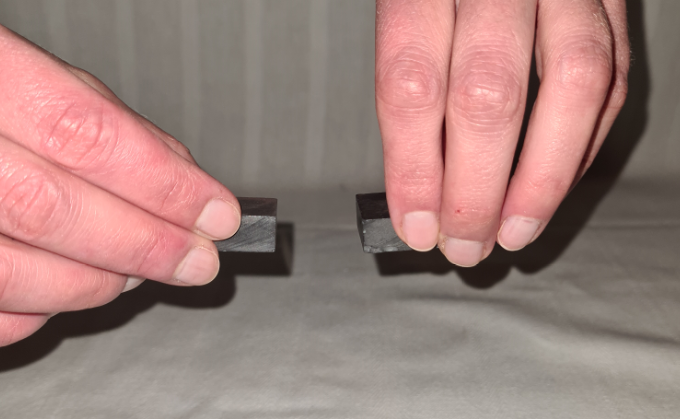
- Rub the ruler vigorously with the dust cloth. Then hold the ruler over the pieces of paper. Describe your observations.
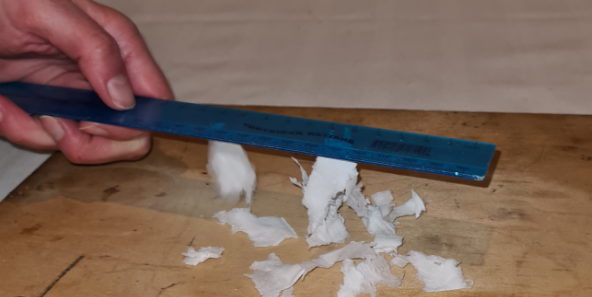
What did you find?
From your observations you will be able to describe examples of non-contact forces.
Part 1:
When you released the object you held above the ground, it fell downwards. As you know by now, the motion or shape of an object changes when an unbalanced force acts on it. Therefore, a force must have been acting on the object to make it fall down.
The force at work here was a gravitational force, often simply called gravity. We can write it as FG. Gravity is a non-contact force that exists between any two objects with mass because they attract each other. This is known as the law of universal gravitation.
The effect of gravitational force is most notable when one of the objects is much more massive than the other. This is what we experience on Earth: the Earth’s gravitational force is much bigger than other objects on Earth, and so all objects close to the Earth’s surface are attracted downwards, towards the Earth.
Part 2:
When you held the magnet above the paper clips or pins, you would have noticed that they were attracted towards the magnet, without direct contact exerting a force.
Part 3:
Similarly, when you brought the two magnets towards each other (whether with opposite or like poles facing each other), you would have felt either a pull or a push between them, again without their touching each other. Both these effects are caused by the magnetic force, which results from the items interaction with the magnetic field.
Part 4:
When you rubbed the plastic ruler with the dust cloth, the ruler became electrostatically charged. This means it had an excess of one type of charge. When you held the charged ruler above the pieces of paper, they were attracted to the ruler. This is due to the interaction of electric fields between the ruler and the paper, which caused an electric force. The size of the field around the charged ruler was stronger than that around the pieces of paper, and therefore the pieces of paper moved in the direction of the ruler.
Note
- If there is a magnet near an object, there will be a magnetic force.
- If there is a charged object near an object, there will be an electric force.
- If there is a planet (or other massive body) near an object, there will be a gravitational force. All objects on Earth are therefore acted on by the Earth’s gravitational force.
-
Watch: What are NON-CONTACT Forces? - Part 1
-
Watch: What are NON-CONTACT Forces? - Part 2
-
Now that you have had a chance to explore different types of contact and non-contact forces, it is time for you to use your knowledge to analyse a real-life situation where forces are involved.
-
Activity 1: How forces work
Time required:
- 30 minutes
What you need:
- A pen or pencil
- A piece of paper
What to do:
Remember this video from the previous lesson? Even though things seem quite simple, we can learn many important things about how forces work by looking at the action carefully. Watch the video and then try and answer the questions below.
- At the start, the ball is not moving. It is stationary on the ground. What forces are acting on the ball? Are these forces the same size? Do they act in the same direction?
- As the boy kicks the ball, what happens to its motion? What forces are acting on the ball now?
- Why do you think the ball moves both towards the goal AND up?
- What kind of force do you think makes the ball change direction when it hits the net of the goal? Think about what happens to the net ropes.
- As the ball rolls away from the goal, why does it eventually stop?
Here is a summary of what we have learnt about forces that we can observe in the video.
1. The interaction between objects can happen because of their direct contact with each another. These are contact forces.
At the start, the ball was at rest on the ground. Because the ball touched the ground and the ground touched the ball, we know that this was a contact interaction. Understanding force as the result of an interaction between objects, we can say that the ball exerted a force on the ground and that the ground exerted a force on the ball.
When the boy kicked the ball, his foot touched the ball and the ball also touched his foot. Through the contact interaction, the boy’s foot exerted an applied force on the ball and the ball exerted a force on his foot.
2. The interaction between objects can be caused by invisible surrounding fields interacting with each other. This is called a field interaction.
At the end of the video clip, we see the ball dropping down to the ground, without contact with another object. This is the result of the interaction between the gravitational fields around two objects, namely the Earth and the ball. These are non-contact forces because the objects interact without touching each other.
Every object that has mass also has a surrounding gravitational field. The Earth’s gravitational field is much bigger than that of the ball. This is because the Earth has much more mass than the ball and so exerts a bigger force on the ball than the ball on the Earth.
3. Forces work as interacting pairs
As force is the result of an interaction between two objects, it follows that the objects will each exert a force on the other, in opposite directions. For example, the ball lying on the ground pushes down on the ground, and the ground pushes up on the ball.
4. Force is a vector quantity. This means it has size and direction
Force is measured in newtons (N). When we describe a force, we must mention both its magnitude (size) and its direction. For example:
- The ball lying at rest exerts a force of a certain magnitude downwards.
- The boy’s foot on the ball exerts a force of a certain magnitude forward and to the right.
When we describe a force quantitatively – in other words, with numbers – the number tells us its size, and the sign - positive or negative – tells us its direction relative to a predefined frame of reference. For example, if we define up as the positive vertical direction, we know that a force with a negative value acts downwards.
5. We cannot see forces themselves, only their effects
We can see the effect of a force by looking at an object’s shape or motion. A force can cause an object to remain as it is or cause a change in its shape or motion. In the video clip we saw:
- force causing a change in an object’s shape when the ball hit the net and made the net bulge out
- force affecting the speed at which an object moves, when the boy kicked the stationary ball to make it move, or the ball rolling slower and slower along the ground until it eventually stopped
- force affecting the direction in which an object moves, such as when the ball hit the net and rolled away from the net.
6. A change in an object’s shape or motion is caused by unbalanced forces acting on the object. When the forces acting on an object are balanced, its shape or motion will remain unchanged.
The ball fell to the ground because the gravitational force of the Earth pulling the ball downwards was bigger than the gravitational force of the ball on the Earth. That means that in this interacting force pair, the force acting downwards and the one acting upwards were unbalanced, and so the ball’s motion changed.
When the ball lay on the ground, it was acted on by the force of gravity. Yet it lay still; its motion or shape did not change. This tells us that a force equal in size but opposite in direction was also acting on the object. We say two such counteracting forces acting on an object balance each other.
7. The effect of a force is the sum of all the forces acting on an object.
Forces are additive, like all vector quantities. If the two forces in an interacting pair have equal magnitudes but opposite signs, the resultant force will be zero. If the two forces have unequal magnitudes, the sum will be a non-zero value, which means the net effect will be in the direction of the force with the bigger magnitude.
Note
Resultant force is also called net force. - 30 minutes
-
Watch: What is force? - Part 1
This video gives an excellent introduction to what forces are.
-
Watch: What is Force? - Part 2
If you have an internet connection, watch this video for a great summary of what we have learnt so far.
-
-
So far, we have learnt a lot about forces. We know that...
- A force is a push or a pull that results from the interaction between two objects.
- Interactions can involve direct contact or occur at a distance. We can have contact interactions and non-contact interactions.
- Therefore, there are contact forces and non-contact forces.
- Examples of non-contact forces are gravity, magnetic force and electric force.
- Examples of contact forces include the normal force, friction, tension, air or water resistance, the spring force and applied force.
- Forces act in interacting pairs on an object.
- We cannot see a force, only its effects.
- Force is a vector: it has both size and direction.
-
The Effects of Forces
Have a look at the following pictures and try and describe how the forces acting on each object are changing that object or its properties.
How is the person's hand changing the ball?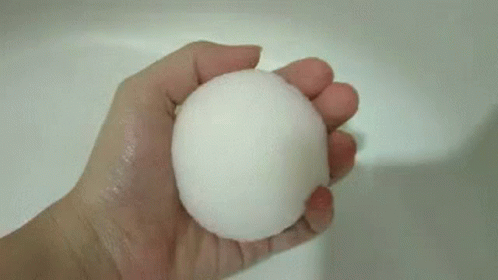
What effect does the force applied by the truck's brakes have?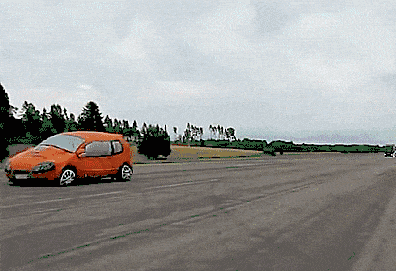
What happens does the player use his head to do to the ball?
In the first case, the person uses their hand to squeeze the ball. This force changes the ball's shape.
In the second case, the force applied by the truck's brakes act to slow the truck down to a stop. In other words, they change the speed of the truck.
In the last case, the player uses his head to apply a force to the ball to change its direction.When an object is moving, we say it has a velocity. Velocity is the speed of an object AND its direction. Speed describes only how fast an object is moving, whereas velocity gives both speed and direction.
An object can move at constant velocity. This means it travels at the same speed in the same direction. For example a car travelling along the highway at 100 km/h in a straight line has a constant velocity. However, what happens when the car accelerates or brakes? It's speed and, therefore, velocity changes.
If the same car changes lanes, its velocity will also change even if its speed does not because its direction has changed. Therefore,
- Forces can change the shape of an object. This is called deformation.
- Forces can change the velocity of an object. This means that either the object's speed or direction (or both) are changed.
-
Watch: How Objects Interact
Watch the following video for an excellent summary of what we have learnt about forces.